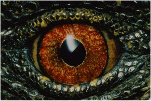A number of reports over the last decade have shown amphibians, lizards, fish, and birds facing steep population declines across species and continents, providing further evidence that the planet is undergoing a mass extinction. Now a new study in Biology Letters adds another group of animals to that list: snakes.
Studying 17 snake populations from seven species in Europe, Africa, and Australia, researchers found that 11 of the populations (64 percent) suffered declines with some populations dropping as much as 90 percent. At the same time only one of the populations (less than 6 percent) rose.
Although separated geographically, the decline for each of the populations began around 1998. Researchers are not sure what caused the decline, although 1998 was the warmest year on record leading scientists to speculate that climate change may, at least in part, be responsible. Other factors could include habitat decline and a drop in prey populations.
Given the small sample size—seven species and 17 populations—scientists say that more data is needed on snake populations in order to understand the exact causes behind the observed decline.
“The problem is that snakes are very difficult to work on and there are very few long-term individual based population studies of them,” Chris Reading, lead author of the study, told The Guardian. “If, as a result of our paper we can get herpetologists around the world to analyze their data again then we may start to build a clearer picture of what may be happening to snakes and what the causes of any declines may be.”
While snakes are often one of the top animals that people fear, Reading told the Christian Science Monitor that snakes are important for ecosystems and humans: they provide pest control.
“They are the top predator in many ecosystems in which they occur. If you get rid of a top predator, it will have a knock-on affect on all those species on which they prey […] You take out the predator and suddenly you have an increase in the pest species.”
Snakes prey heavily on rodents, and in turn help protect crops around the world.
As of last year the IUCN Red List estimated that 31 percent of reptiles were threatened with extinction.
Related articles
Collapsing biodiversity is a ‘wake-up call for humanity’
(05/10/2010) A joint report released today by the Convention on Biological Diversity (CBD) and the UN Environment Program (UNEP) finds that our natural support systems are on the verge of collapsing unless radical changes are made to preserve the world’s biodiversity. Executive Secretary of the Convention on Biological Diversity, Ahmed Djoghlaf, called the bleak report “a wake-up call for humanity.”
Secrets of the Amazon: giant anacondas and floating forests, an interview with Paul Rosolie

(03/10/2010) At twenty-two Paul Rosolie has seen more adventure than many of us will in our lifetime. First visiting the Amazon at eighteen, Rosolie has explored strange jungle ecosystems, caught anaconda and black caiman bare-handed, joined indigenous hunting expeditions, led volunteer expeditions, and hand-raised a baby giant anteater. “Rainforests were my childhood obsession,” Rosolie told Mongabay.com. “For as long as I can remember, going to the Amazon had been my dream […] In those first ten minutes [of visiting], cowering under the bellowing calls of howler monkeys, I saw trails of leaf cutter ants under impossibly large, vine-tangled trees; a flock of scarlet macaws crossed the sky like a brilliant flying rainbow. I saw a place where nature was in its full; it is the most amazing place on earth.”
Reptiles underrepresented on the IUCN Red List

(11/04/2009) Currently there are an estimated nearly 9,000 reptiles in the world, while the International Union for Conservation of Nature (IUCN) Red List has assessed all of the world’s described mammals, birds, and amphibians, reptiles have yet to be fully assessed, leaving herpetologists with an unclear picture of how reptiles are faring in the world. Currently, 1,677 reptiles have been assessed (less than 20 percent of the total number of reptile species known) with 293 added this year.